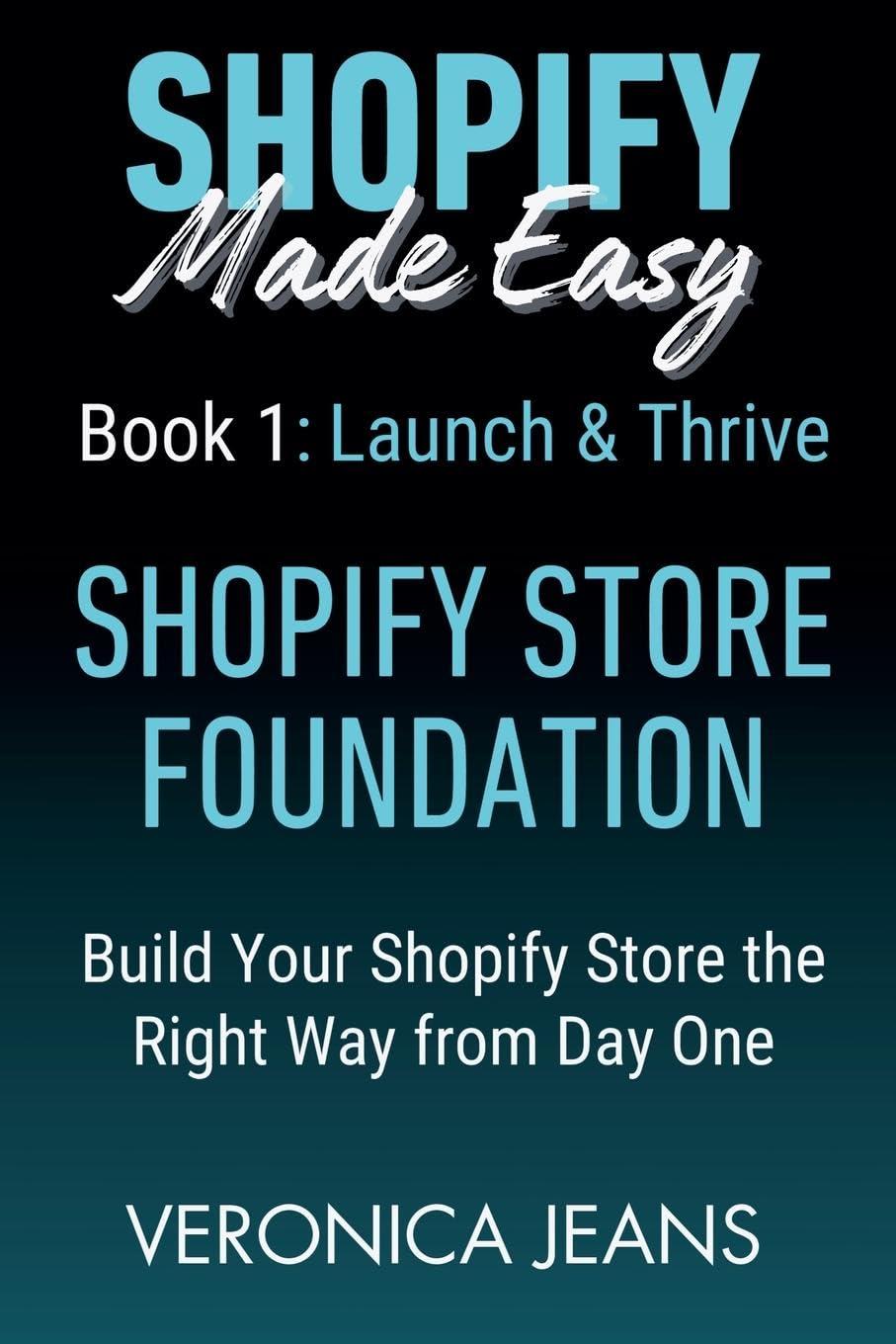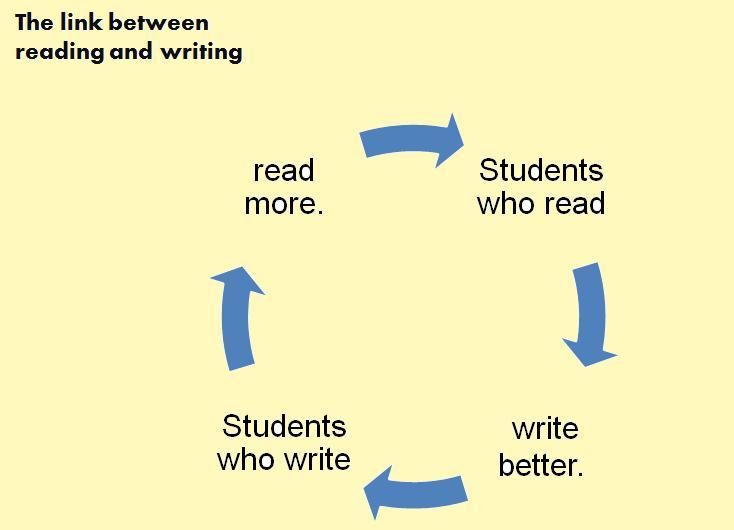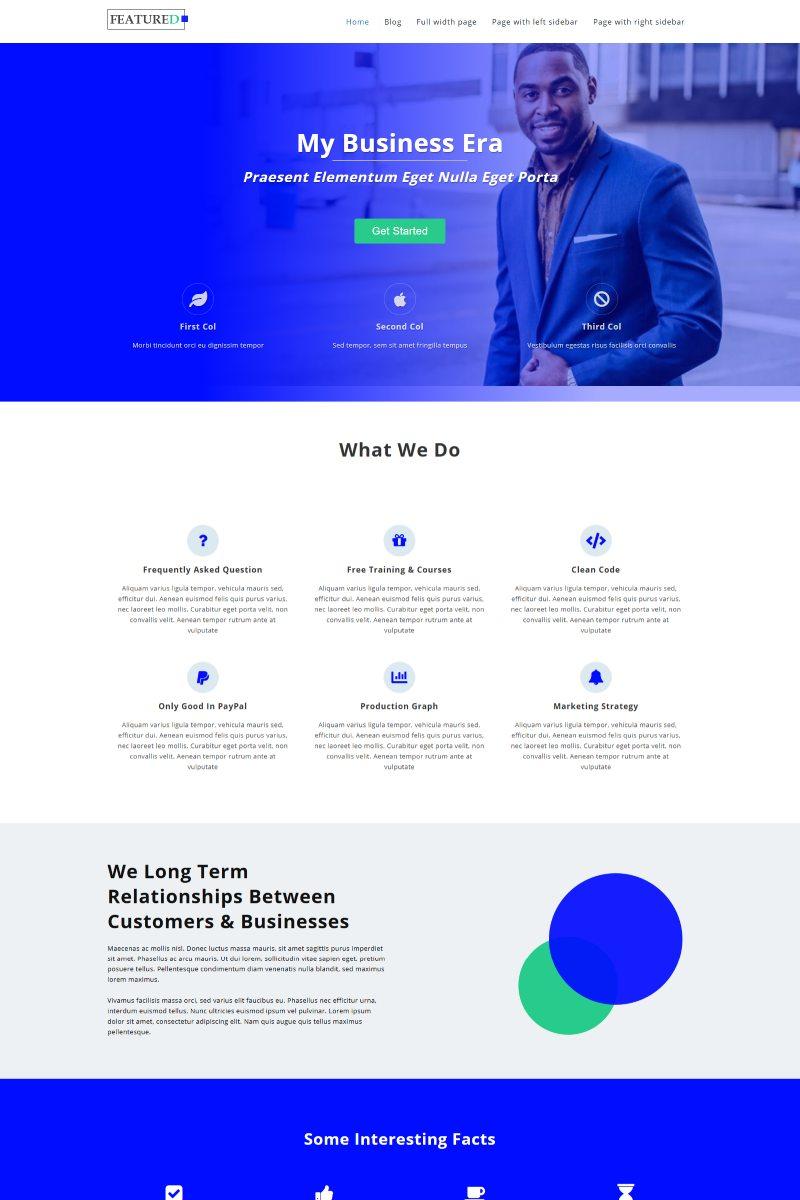Build a Shopify Store That Actually Converts: Your Blueprint for E-Commerce success
So, you’ve decided to dive into the world of e-commerce and build your very own Shopify store—exciting, right? But hold on a minute. Before you start dreaming about dollar signs and overflowing shopping carts, let’s talk about the reality of online selling. It’s not just about setting up a pretty website and hoping for the best. If you want a store that converts visitors into loyal customers, you need a strategic approach.
In this article, we’re going to explore the key ingredients that make a Shopify store not just functional, but irresistible. Whether you’re a seasoned seller or a complete newbie, we’ll guide you through proven strategies and insider tips that can transform your store from a digital storefront into a customer magnet. So,grab your favorite beverage,and let’s get ready to turn your Shopify dreams into a thriving reality!
Understanding Your Target Audience is Key
To create a Shopify store that converts, it’s essential to understand the people you want to reach. Your target audience is not just a demographic but a community of potential customers with their own needs,preferences,and pain points. By getting to know them intimately, you can tailor your offerings to meet those specific needs, ultimately leading to higher conversion rates.
Start by conducting thorough market research. Here are some effective methods to gather insights:
- Surveys and Questionnaires: Reach out to existing customers and prospects to gather their opinions and preferences.
- Social Media Insights: Analyze the engagement on your social media platforms to see what content resonates with your audience.
- Competitor Analysis: Review what similar businesses are doing, and identify gaps where you can offer something unique.
Once you’ve collected data, create detailed customer personas. These fictional characters should embody your ideal customers and include details like:
- Demographics: Age, gender, income level, and location.
- Behavioral Traits: Shopping habits, brand loyalty, and preferred channels.
- Motivations and Pain Points: What drives their purchasing decisions and what challenges do they face?
With these personas in mind, you can craft marketing messages that resonate. For example, if your audience values sustainability, emphasize eco-friendly practices in your product descriptions and marketing campaigns. This personalization not only builds trust but also increases the likelihood of converting browsers into buyers.
It’s also beneficial to continuously test and adapt your strategies based on audience feedback and changing trends. Use tools like A/B testing for your landing pages or promotional emails to see what works best. Here’s a simple table to illustrate the importance of testing:
| Test element | Expected Outcome |
|---|---|
| Landing Page Copy | Higher engagement and conversion rates |
| email Subject Lines | Increased open rates |
| Product Images | Improved click-through rates |
don’t underestimate the power of community engagement. Building strong relationships with your audience through social media, informative blog content, and responsive customer service fosters loyalty. When customers feel valued and understood, they are more likely to return and recommend your store to others, amplifying your reach and potential for conversions.
Crafting an Irresistible Value Proposition
Creating a value proposition that speaks directly to your target audience is essential for transforming your Shopify store into a conversion powerhouse. A strong value proposition clearly articulates why your product is not just another option but the solution your customers have been searching for.
To develop an irresistible value proposition,consider the following key elements:
- Customer Pain Points: Identify the specific problems your customers face. What challenges do they encounter that your product or service can resolve?
- unique Selling Points (USPs): Highlight what makes your product different from competitors. Is it superior quality, unique features, or remarkable customer service?
- Emotional Connection: Appeal to your customers’ emotions. How does your product make their lives better or easier? Connecting on an emotional level can significantly boost conversion rates.
Next, consider developing a concise statement that encapsulates these elements. This statement should be clear, compelling, and easily understandable. For example:
“Our eco-friendly yoga mats provide superior grip and comfort, helping you find your center while caring for the planet.”To further refine your value proposition, test different versions to see which resonates best with your audience. Utilize A/B testing on your landing pages and product descriptions to gauge engagement. Here’s a simple table to illustrate potential variations:
| Version | Focus | Engagement Rate |
|---|---|---|
| Version A | Quality and Durability | 18% |
| Version B | Eco-Friendliness | 25% |
| Version C | Affordability | 15% |
Lastly, ensure that your value proposition is prominently displayed throughout your Shopify store. From the homepage to product pages, a consistent and clear message will reinforce its importance and help guide the customer journey. Remember, your value proposition isn’t just a tagline; it’s a promise that you must deliver on with every purchase.
Designing a User-Friendly Navigation Experience
Creating a seamless navigation experience is essential for any Shopify store aiming to convert visitors into loyal customers. When users can easily find what they are looking for, they are more likely to make a purchase. Here are some key strategies to enhance the navigation of your online store:
- Simplify Your Menu: Keep it clean and intuitive. Limit the number of main categories to five or six, ensuring they are representative of your product range.
- Utilize Dropdowns: for stores with many products, dropdown menus help to keep the main navigation tidy while still providing access to subcategories.
- Search Functionality: Implement a prominent search bar that allows users to quickly find specific items. consider adding filters to refine search results based on attributes like size, color, and price.
Visual elements also play a significant role in guiding users through your store.High-quality images,icons,and even color schemes can enhance usability:
- Consistent Color Palette: Use a cohesive color scheme to differentiate between categories and offers,making navigation visually appealing.
- Highlight Active Sections: Make it clear which section the user is currently viewing through subtle changes in color or font weight.This helps in maintaining orientation.
- Use Icons Wisely: Incorporate recognizable icons next to menu items to quickly convey their purpose, enhancing user comprehension at a glance.
Another frequently enough-overlooked aspect is mobile optimization. Since a significant portion of online shopping occurs on mobile devices, it’s crucial to ensure that your navigation is responsive:
- Mobile-Friendly Layout: Design a mobile version of your site that collapses menus into hamburger icons, providing an uncluttered experience.
- Tap Targets: Ensure buttons and links are large enough for easy tapping, reducing frustration for users navigating on smaller screens.
Lastly, consider implementing a breadcrumb navigation trail, which allows users to track their path back through the store.This not only enhances usability but also encourages exploration of related products:
| Breadcrumb Level | Example |
|---|---|
| Home | / |
| Category | /Men’s Apparel/ |
| Subcategory | /T-Shirts/ |
| Product | /Cool Graphic Tee |
By implementing these strategies,you can create a user-friendly navigation experience that not only enhances aesthetic appeal but also significantly boosts the potential for conversions. Remember, the ultimate goal is to make the shopping journey as effortless as possible for your customers.
Choosing the Right Theme for Maximum Impact
When it comes to building a Shopify store that converts, the theme you choose plays a pivotal role.The right theme not only aligns with your brand but also enhances user experience and boosts conversion rates.Here are some essential aspects to consider:
- Visual Appeal: Your theme should create a lasting first impression. Opt for clean, modern designs that reflect your brand’s identity. bold colors and engaging images can draw customers in and keep them browsing.
- Mobile responsiveness: With many customers shopping via mobile devices, it’s crucial to select a theme that looks great on all screen sizes. Ensure that your layout adjusts seamlessly, allowing for easy navigation and a pleasant shopping experience.
- Load speed: A slow-loading site can turn potential customers away. Choose a theme optimized for speed. You can test different themes’ performance using tools like Google PageSpeed Insights to ensure your store runs smoothly.
- Customization Options: Adaptability in customization can help you create a unique shopping experience.Look for themes that allow you to tweak layouts, colors, and fonts without needing extensive coding knowledge.
- Built-in Features: Some themes come with built-in features such as product sliders, pop-up promotions, and social media integration. These can enhance the functionality of your store and offer a better user experience.
Additionally, keep an eye on the SEO capabilities of your chosen theme. A well-structured theme can improve your search engine rankings and drive organic traffic to your store. Select a theme that allows for easy integration of SEO tools and best practices.
Consider also the support and updates that come with your theme. Regular updates ensure compatibility with the latest Shopify features and security protocols, while reliable support can help you troubleshoot any issues quickly.
To help visualize the options, here’s a speedy comparison of popular Shopify themes:
| Theme Name | Mobile Friendly | customization Level | SEO Optimized |
|---|---|---|---|
| Debut | Yes | Medium | Yes |
| Brooklyn | yes | High | Yes |
| Minimal | Yes | Low | Yes |
| Supply | Yes | Medium | No |
Ultimately, the theme you select should resonate with your target audience and reflect your brand’s core values. By keeping these criteria in mind, you’re one step closer to building a Shopify store that not only attracts visitors but also converts them into loyal customers.
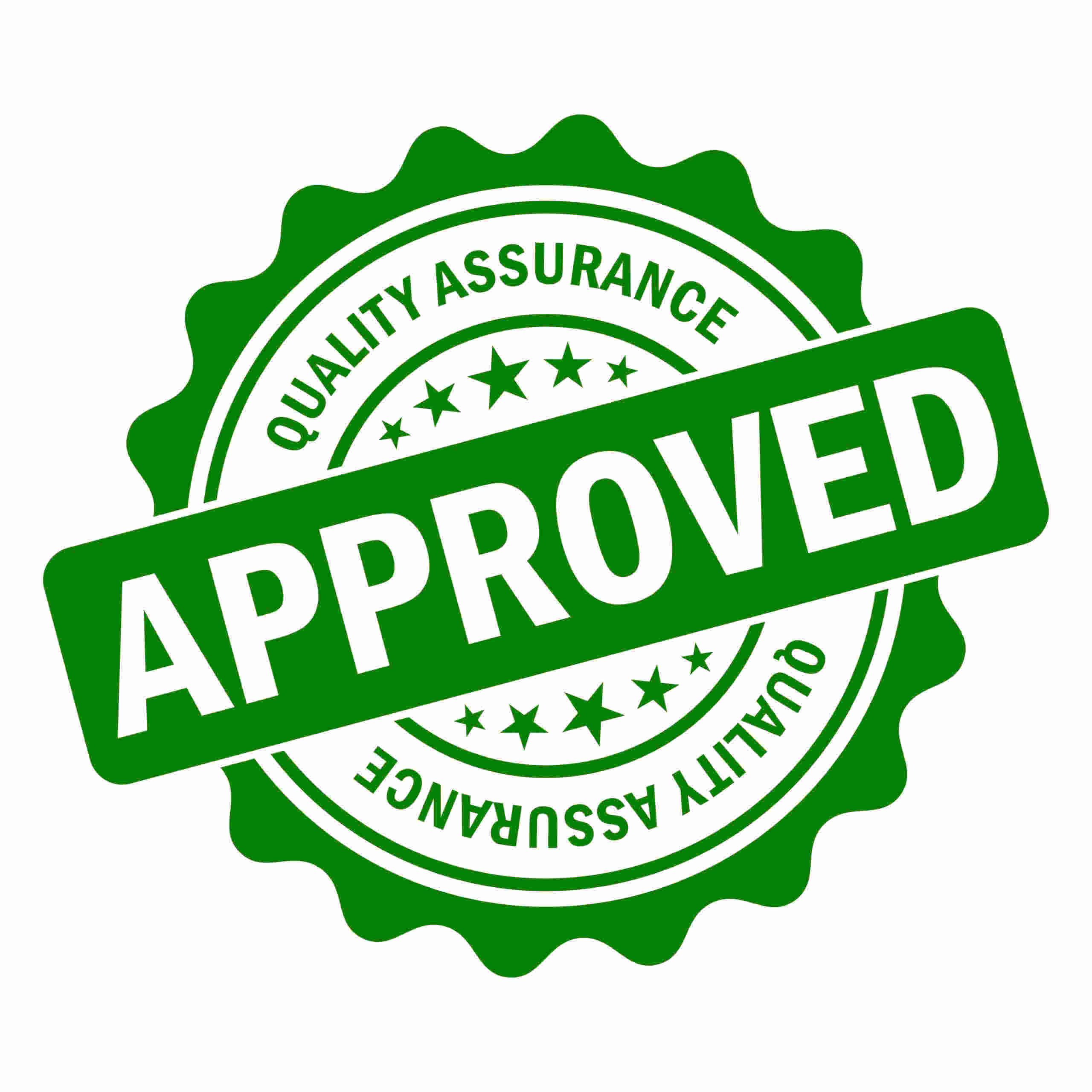
Leveraging High-Quality Product Images and Descriptions
In the world of e-commerce, first impressions matter. When potential customers land on your Shopify store, they form opinions within seconds, and high-quality product images can be the difference between a click and a purchase. Investing in professional photography can elevate your brand, showcasing your products in the best light. Ensure that your images are:
- High Resolution: Crisp, clear images draw the eye.
- Multiple Angles: Showcasing your product from different perspectives helps customers understand its features.
- Contextual Usage: Images that demonstrate the product in use can enhance relatability and desirability.
Alongside stunning visuals, detailed descriptions play a crucial role in guiding customers through their buying journey. A compelling product description should not only highlight the features but also communicate the benefits. Effective descriptions can:
- Address pain Points: Explain how your product solves a problem or improves their life.
- Incorporate Keywords: Use relevant keywords to improve SEO and make your product more discoverable.
- Tell a Story: Connect emotionally with your audience by sharing facts about the product’s origin or the craftsmanship behind it.
When crafting descriptions,consider using a combination of storytelling and concise bullet points. This allows customers to skim for vital information while still engaging with the narrative. Here’s a simple example of how to structure your product information:
| Feature | Benefit |
|---|---|
| Eco-friendly materials | safe for you and the planet |
| Customizable options | Personalize your experience |
| Free shipping on orders over $50 | More value for your purchases |
Moreover, consider adding customer reviews and testimonials alongside your product images and descriptions. Social proof can significantly influence purchasing decisions. When potential buyers see positive feedback from others, they’re more likely to trust your brand and products. Make it easy for your customers to leave reviews, and highlight these endorsements on your product pages.
Lastly, remember to optimize your images for fast loading times.While high-quality visuals are essential, slow-loading pages can deter potential customers. Use appropriate file formats and compression techniques to ensure that your images look great without sacrificing performance. A seamless shopping experience will keep customers engaged and encourage them to explore more of what your store has to offer.
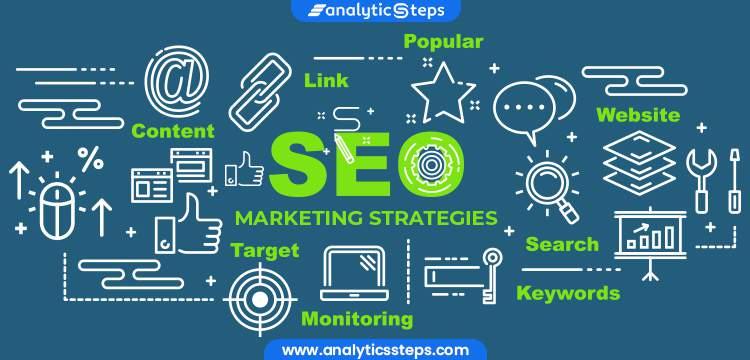
implementing Effective SEO Strategies for Visibility
To enhance the visibility of your Shopify store, implementing robust SEO strategies is essential. Start by conducting thorough keyword research to identify the terms that your target audience is actively searching for. This foundational step allows you to align your content with the interests and needs of potential customers.
Once you’ve identified your keywords, integrate them naturally throughout your site. Focus on the following areas:
- Product Descriptions: Craft unique and compelling descriptions that not only describe the product but also incorporate relevant keywords.
- Page Titles and Meta Descriptions: Ensure each page has a catchy title and a succinct meta description that includes your primary keywords.
- Alt Text for Images: Use descriptive alt text for images, which aids in SEO while providing context for visually impaired users.
Another critical aspect of effective SEO is enhancing the user experience (UX) of your Shopify store.A seamless and intuitive shopping experience encourages longer visits and higher conversion rates. Consider the following elements:
- Mobile Optimization: Ensure your store is fully responsive, as a significant portion of online shopping occurs on mobile devices.
- Site Speed: Optimize images and reduce unnecessary plugins to improve load times. A faster site leads to lower bounce rates.
- Easy Navigation: Create a clear and structured menu that helps users find products quickly and easily.
Content marketing also plays a vital role in driving traffic to your store. Consider creating a blog that not only showcases your products but also provides valuable information related to your niche. for instance, if you sell fitness gear, you could write about workout tips or nutrition advice. This not only positions you as an authority in your field but also attracts organic traffic.
| SEO Strategy | Benefit |
|---|---|
| Keyword Research | Aligns content with user search intent |
| Mobile Optimization | Enhances user experience on mobile devices |
| Content Marketing | drives organic traffic and builds authority |
don’t forget the power of backlinks. Building relationships with other websites and influencers in your industry can lead to opportunities for guest blogging or collaborations,which can significantly boost your store’s visibility in search engines. Aim to create high-quality content that others want to link to, ensuring a natural growth of your store’s authority.
By focusing on these effective strategies, your Shopify store can rise above the competition, attract more visitors, and ultimately convert them into loyal customers.
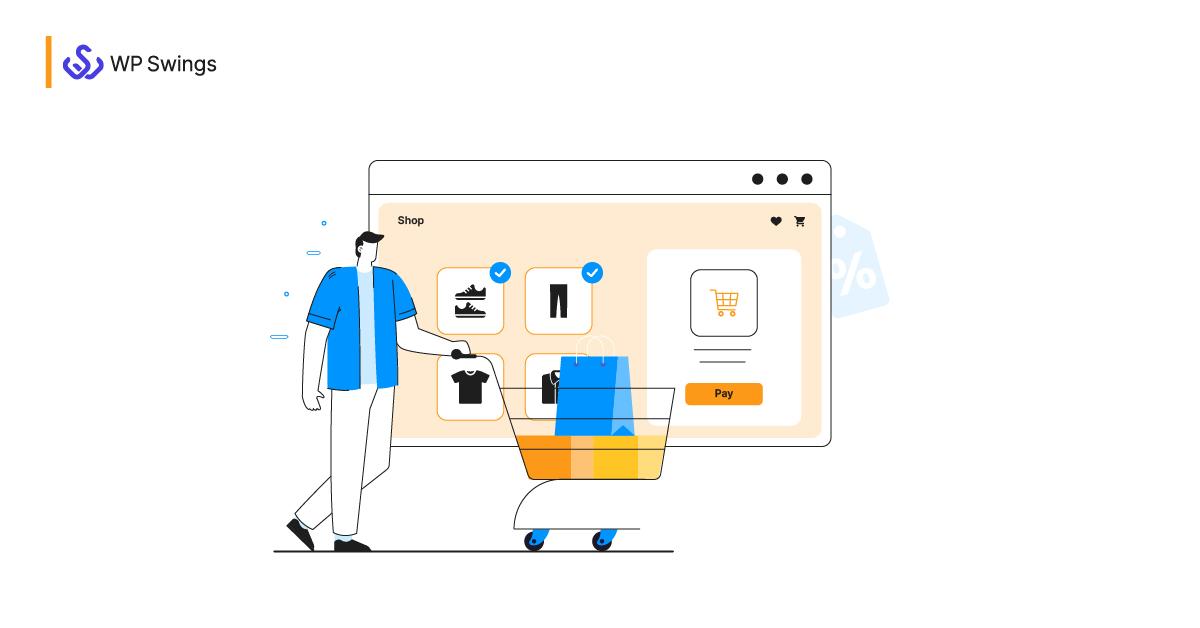
Streamlining the Checkout Process to Reduce Cart Abandonment
To transform your Shopify store into a conversion powerhouse, focusing on the checkout experience is crucial. Many shoppers abandon their carts due to a frustrating or complicated checkout process. By streamlining this experience, you can significantly lower abandonment rates and boost your sales.
Here are some effective strategies to enhance your checkout process:
- Minimize form Fields: Keep the checkout form as short as possible. Only ask for essential information, such as name, shipping address, and payment details. A lengthy form can deter customers from completing their purchase.
- Guest Checkout Option: Allow customers to check out without creating an account. This option reduces friction and caters to those who prefer a quick purchasing process.
- Progress Indicators: Implement a visual progress bar that shows customers how far along they are in the checkout process. This simple addition can reassure shoppers, making them less likely to abandon their carts.
- Multiple Payment Options: Offer a variety of payment methods, including credit/debit cards, digital wallets, and buy-now-pay-later services.The more options you provide, the more likely customers are to complete their transactions.
Additionally, consider the following best practices:
| Best Practise | Benefits |
|---|---|
| Provide Clear Shipping Information | Eliminates surprises during checkout, enhancing customer trust. |
| show security Badges | Reassures customers that their information is safe, increasing conversion rates. |
| Enable Cart Saving | Encourages users to return and complete their purchases later. |
By implementing these elements, you create a more user-friendly environment that addresses common pain points.Remember, the goal is to facilitate a smooth transition from product selection to purchase completion. Each step must be intuitive and hassle-free, as even minor obstacles can lead to cart abandonment.
Lastly, continuously analyze your checkout process through A/B testing and customer feedback. This will help you identify areas for advancement and ensure that your store adapts to the evolving needs of your shoppers. A well-tuned checkout experience is not just a feature; it’s a powerful tool that can drive sales and establish customer loyalty.
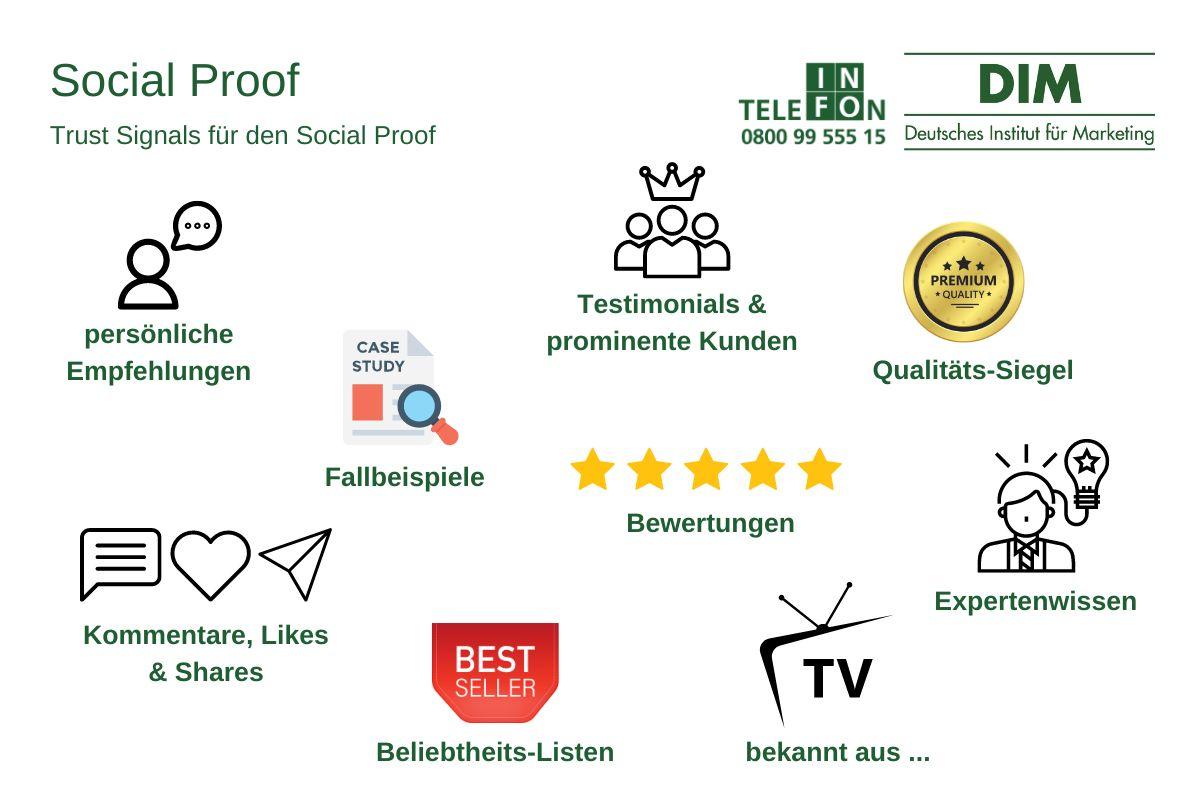
Harnessing the Power of Social Proof and Customer Reviews
In the world of e-commerce, the opinions of others frequently enough hold more weight than the brand’s own marketing efforts. When potential customers visit your Shopify store, they are not just looking for products; they are seeking reassurance that they are making the right choice. This is where social proof and customer reviews come into play,acting as a powerful catalyst for conversions.
Why Social Proof Matters
Humans are intrinsically social creatures who tend to look to others for guidance, especially when making decisions.Social proof can take many forms,including:
- Customer Reviews: Genuine feedback from your customers can create trust and credibility.
- Testimonials: Endorsements from satisfied clients can resonate with new visitors.
- User-Generated Content: Photos and posts from customers using your products can serve as visual proof of quality.
By showcasing these elements prominently on your site, you can diminish the uncertainty that often accompanies online shopping. This not only boosts consumer confidence but also enhances the perceived value of your products.
implementing Customer Reviews Effectively
Integrating customer reviews into your Shopify store can be seamless and effective. Here’s how you can do it:
- Star Ratings: Display average star ratings on product pages to give quick insights into customer satisfaction.
- Review Highlights: Use snippets of standout reviews to captivate visitors and streamline their decision-making process.
- Incentivize Reviews: Encourage customers to leave reviews by offering discounts or entry into giveaways.
A well-placed review can act as a tipping point for hesitant shoppers. As a notable example, displaying a review mentioning excellent customer service alongside a product can definitely help reinforce the notion that buyers will be supported, even after their purchase.
Creating a Social Proof Strategy
To harness social proof effectively, consider the following strategies:
- Showcase Popular Products: Highlight best-sellers or products with the most reviews on your homepage to draw attention.
- Utilize Social Media: Share customer interactions and product photos from social media platforms to create a vibrant community around your brand.
- Feature Influencers: Partner with influencers in your niche to amplify your reach and credibility.
| Type of Social Proof | Impact on Consumer |
|---|---|
| Customer Reviews | Increases trust and credibility |
| Testimonials | Builds emotional connection |
| User-Generated Content | Validates product quality |
Incorporating social proof into your Shopify store is not merely a marketing tactic; it’s about creating an environment where your customers feel valued and understood.When visitors see that others have had positive experiences, they are more likely to convert, transforming your store into a thriving e-commerce hub.

Integrating Email marketing for Customer Retention
Email Marketing as a retention Strategy
In the competitive world of eCommerce, retaining customers is just as crucial as acquiring new ones. One of the most effective ways to keep your customers coming back is through email marketing. By cultivating a strong relationship with your audience, you can transform one-time buyers into loyal brand advocates.
Start by segmenting your email list. This allows you to tailor your messages to specific groups of customers based on their behavior, preferences, or purchase history. For example:
- New Customers: Welcome emails that include a discount for their next purchase.
- Repeat Customers: exclusive offers or rewards for their loyalty.
- Inactive Customers: Re-engagement campaigns that remind them of what they’re missing out on.
Personalization is key. Use customer data to create personalized content that resonates with your audience. Addressing customers by their first name, recommending products based on past purchases, or sending birthday discounts can significantly enhance engagement rates.
Additionally, consider implementing automated email workflows. These can save you time while ensuring that your customers receive timely messages.Some automated workflows to consider include:
- Post-purchase follow-ups to gather feedback and encourage reviews.
- Abandoned cart reminders to prompt customers to complete their purchases.
- Re-engagement series for customers who haven’t purchased in a while.
| Email Type | Purpose | frequency |
|---|---|---|
| Welcome Email | Introduce brand and offer discount | Instantly after sign-up |
| Thank You Email | Express gratitude for purchase | Immediately after purchase |
| Monthly Newsletter | Share updates and new products | Monthly |
| Special Promotions | Announce flash sales or special events | As needed |
don’t forget to track and analyze your email performance. Metrics such as open rates, click-through rates, and conversion rates provide insights into what resonates with your audience. Use this data to continually refine your email marketing strategy and ensure you’re meeting your customers’ needs.

Utilizing Analytics to Track Performance and Make Improvements
In the dynamic world of eCommerce, understanding your store’s performance is crucial to staying competitive. By harnessing the power of analytics, you can gain valuable insights into customer behavior, sales trends, and product performance. This knowledge allows you to make data-driven decisions that directly impact your bottom line.
Start by integrating analytics tools such as Google Analytics or Shopify’s built-in dashboard. these tools can provide you with key metrics, including:
- Traffic Sources: Know where your visitors are coming from—social media, search engines, or direct visits.
- Conversion Rates: Understand how many visitors are making purchases and identify which pages are performing best.
- Customer Demographics: learn about your audience’s age,location,and interests to tailor your marketing strategies.
Once you have this data, it’s time to analyze it. Look for patterns and trends that can inform your decisions. For instance, if you notice a high drop-off rate on a specific product page, it may indicate a need for improved product descriptions or images. A/B testing can also be a powerful method to refine elements such as:
- Call-to-action buttons
- Pricing strategies
- Checkout processes
To systematically track your performance over time, consider creating a simple performance tracking table.This will help you visualize changes and measure the impact of your optimization efforts:
| Month | Traffic (Visitors) | Conversion Rate (%) | Average Order value ($) |
|---|---|---|---|
| January | 1,000 | 2.5 | 50 |
| February | 1,200 | 3.0 | 55 |
| March | 1,500 | 3.5 | 60 |
Use this table to identify correlations between traffic, conversion rates, and average order value. If you see an increase in traffic but a stagnant conversion rate,it could signal that while you’re attracting visitors,your site may not be effectively converting them into buyers. Look into user experience and website design for potential improvements.
Lastly, don’t forget to continuously refine your marketing strategies based on the analytics insights. Whether it’s optimizing your SEO, enhancing email campaigns, or targeting ads more effectively, staying proactive in your approach will ensure your Shopify store not only attracts visitors but also converts them into loyal customers.

Creating Compelling Calls to Action that Convert
When it comes to driving conversions in your Shopify store, the words you choose for your calls to action (CTAs) can make all the difference. A well-crafted CTA doesn’t just tell your customers what to do; it inspires them to take action. The right phrasing can tap into their emotions and create a sense of urgency. Here are some tips to help you create CTAs that truly resonate:
- Be Clear and Direct: A CTA should clearly convey what you want the customer to do. Phrases like “Shop Now” or “Get Your discount” leave no room for confusion.
- Use Action-Oriented Language: Verbs that evoke action can make your ctas more impactful. Instead of saying “Learn More,” try “Discover Your Perfect style” to create excitement.
- Create a Sense of Urgency: Incorporating words that suggest limited availability or time constraints can drive immediate action. Consider phrases like “Limited Offer” or “Sale Ends Soon!”
Design also plays a crucial role in the effectiveness of your CTAs. Ensure that your CTA buttons stand out visually while still aligning with your brand’s aesthetic. Here are a few design tips:
- Color Contrast: Use contrasting colors to make your CTA buttons pop against the background of your webpage. Bright colors can draw the eye and increase click-through rates.
- Size Matters: Your CTA button should be large enough to attract attention but not so big that it overwhelms your layout. A size that feels inviting can encourage interaction.
- placement is Key: Position your CTAs in high-visibility areas, such as above the fold or at the end of a product description, where users are more likely to see them.
| CTA Elements | Examples | why It Works |
|---|---|---|
| Urgency | “Buy Now – Stock Limited!” | Encourages immediate action due to fear of missing out. |
| Clear Instructions | “Sign Up for Exclusive Access” | Clearly tells the user what to expect. |
| Personalization | “Get Your Personalized Recommendation” | Engages users by making them feel special and catered to. |
Lastly, don’t underestimate the power of testing. Utilize A/B testing to compare different CTAs and see which ones yield the best conversion rates. This approach allows you to refine your strategies based on actual user behavior, ensuring that your CTAs evolve to meet the needs of your audience. By continuously optimizing your calls to action, you’ll keep your Shopify store dynamic and responsive to what your customers want.

Testing and Optimizing Your Store for continuous Growth
To ensure your Shopify store not only attracts visitors but also converts them into loyal customers, continuous testing and optimization are key. Start by analyzing user behavior through tools like Google Analytics and Hotjar. These platforms provide insights into how visitors are interacting with your store, enabling you to identify areas for improvement.
Begin with A/B testing crucial elements of your store, such as:
- Product Pages: Experiment with different layouts, images, and descriptions to see what resonates most with your audience.
- Checkout Process: Test variations in the checkout flow. Streamlining this process can significantly reduce cart abandonment rates.
- Call-to-Action Buttons: Change the wording, color, or placement of buttons like “Add to Cart” to determine which version drives more clicks.
Next, focus on your store’s loading speed. A mere one-second delay can result in a 7% reduction in conversions. Use tools like PageSpeed Insights to identify and rectify speed issues. Here are some quick tips to enhance your site’s performance:
- Optimize images by compressing them without sacrificing quality.
- Minimize the use of heavy scripts and plugins that may slow down your site.
- Leverage browser caching to enhance loading times for repeat visitors.
Another vital aspect is ensuring your website is mobile-friendly. With a significant portion of traffic coming from mobile devices, your Shopify store must deliver a seamless experience on smaller screens. Use responsive design practices and test your store on various devices and browsers to ensure compatibility.
Consider implementing a feedback loop by actively seeking customer opinions through surveys or post-purchase emails. This feedback can highlight pain points you may not be aware of and provide direct insight into what your customers value most.
| Testing Element | Best Practices |
|---|---|
| Product Pages | Use high-quality images and concise descriptions. |
| Checkout Process | Simplify forms and provide multiple payment options. |
| Call-to-action | Use action-oriented language and contrasting colors. |
Lastly, always keep an eye on your competitors. Regularly analyzing their strategies can provide fresh ideas and keep your store competitive. By continually iterating and optimizing, you’ll be well on your way to building a Shopify store that doesn’t just attract visitors but converts them into lifelong customers.
Frequently Asked Questions (FAQ)
Q&A: Build a Shopify Store That Actually Converts
Q: Why should I choose Shopify for my online store?
A: Great question! Shopify is user-friendly, highly customizable, and packed with features tailored for eCommerce success.it’s designed to help you set up a gorgeous online store quickly, even if you don’t have a tech background. Plus, it offers a wide range of integrations, payment options, and support to help you scale your business.
Q: What’s the first step to building a Shopify store that converts?
A: Start with a clear plan. Define your target audience and understand their needs. This will guide your design choices, product selection, and marketing strategies. When you know who you’re selling to, everything else will fall into place!
Q: How importent is store design?
A: Store design is crucial! A visually appealing store creates a great first impression and builds trust with your audience. Use high-quality images, a clean layout, and easy navigation. Remember, if your site looks outdated or cluttered, visitors are likely to bounce.
Q: What role do product descriptions play in conversions?
A: Product descriptions are your chance to connect with your customers! Rather of just listing features, tell a story about how your product can solve a problem or enhance their life. Use persuasive language and include keywords for SEO. When customers can envision how your product fits into their lives, they’re more likely to click “buy.”
Q: how can I optimize my store for mobile users?
A: With more people shopping on mobile devices than ever, a mobile-optimized store is non-negotiable. Choose a Shopify theme that’s responsive, and ensure that your buttons are easy to tap, images load quickly, and the checkout process is seamless. Don’t forget to test your site on multiple devices!
Q: What’s the best way to drive traffic to my store?
A: There are several effective strategies! Start with social media marketing to reach your audience where they spend their time. Consider content marketing through blogs or videos to establish your brand as an authority in your niche.And don’t underestimate the power of email marketing to nurture leads and convert them into loyal customers.
Q: Should I use paid advertising?
A: Absolutely, but do it strategically! Platforms like Facebook and Google Ads can be incredibly effective if you target the right audience. start with a small budget, test different ads, and analyze the results. This way, you can find what works best for your store without breaking the bank.
Q: How important is customer service for conversions?
A: Customer service can make or break your store! Responsive,friendly,and helpful support can turn a hesitant shopper into a loyal customer. Offer multiple channels for support (like chat, email, and phone), and make sure to respond quickly to inquiries. Happy customers are more likely to return and refer others!
Q: what’s the secret to a high-converting checkout process?
A: Keep it simple and secure! Minimize the number of steps required to check out, offer guest checkout options, and clearly display shipping costs and delivery times before the final step. A streamlined process reduces cart abandonment and boosts conversions. And always ensure your checkout is secure to build trust!
Q: Any final tips for building a accomplished Shopify store?
A: Don’t forget to continuously analyze and optimize! Use tools like Google Analytics to track visitor behavior, identify pain points, and make data-driven decisions. Regularly test different elements of your store (like CTAs and layouts) to see what resonates best with your audience. Remember, building a successful store is an ongoing journey—stay adaptable and keep learning!
Remember, building a Shopify store that converts isn’t just about having a pretty website; it’s about understanding your audience and creating a seamless shopping experience. Start today, and watch your eCommerce dreams become a reality!
Closing Remarks
As we wrap up our journey on building a Shopify store that truly converts, remember that success doesn’t happen overnight.It’s about taking these strategies and applying them consistently, learning from your data, and evolving your store as your audience grows.
Think of your Shopify store as a living entity—nurture it,listen to your customers,and adapt to their needs. The tools and tips we’ve discussed are your stepping stones to not just attracting visitors, but turning them into loyal customers.
So, what’s your next move? Dive in, experiment, and don’t be afraid to make adjustments along the way. With passion and persistence, you can create a store that doesn’t just look good but also drives sales and builds a community.
Ready to transform your online business? Let’s get started—your successful Shopify store is just a click away!

